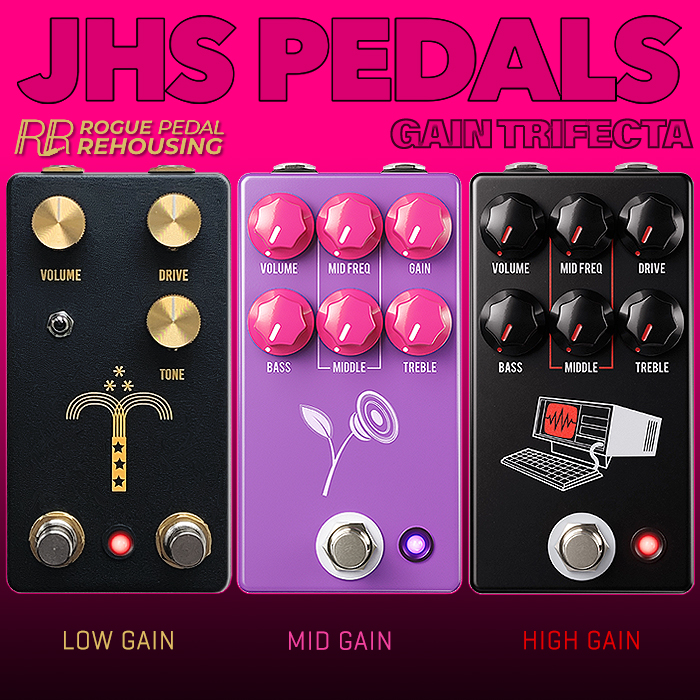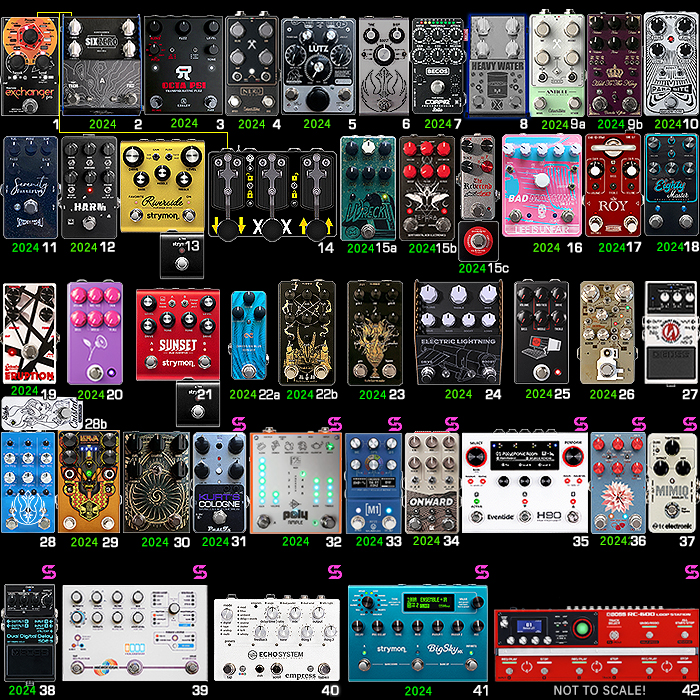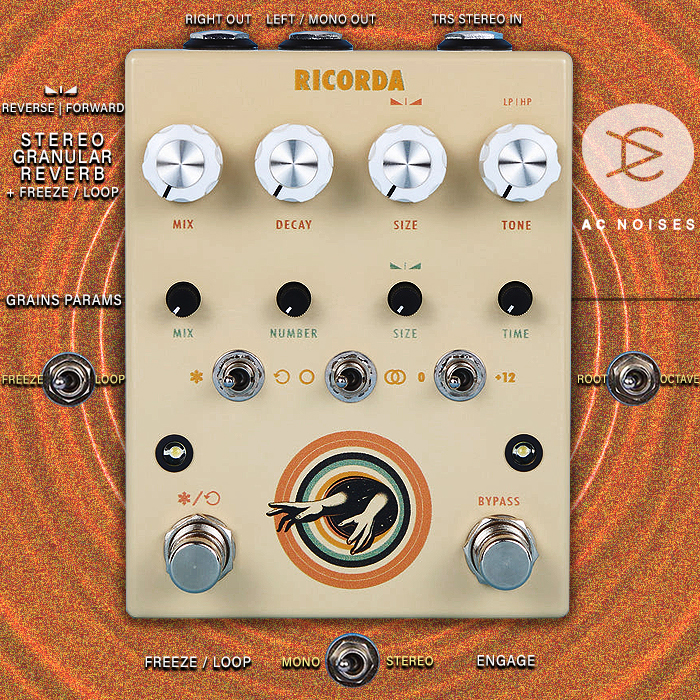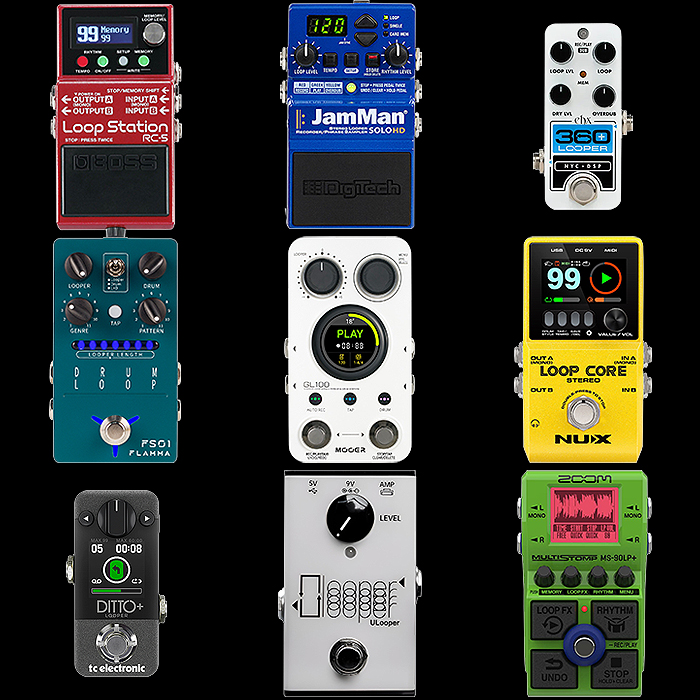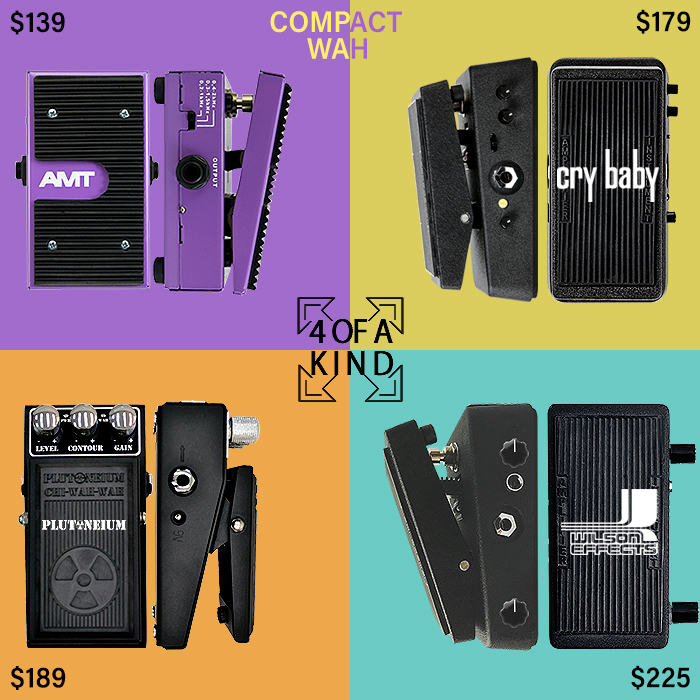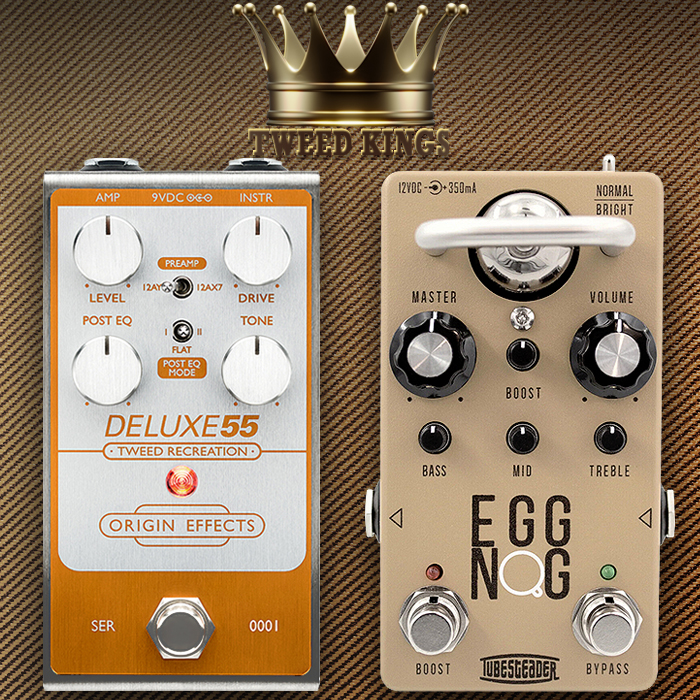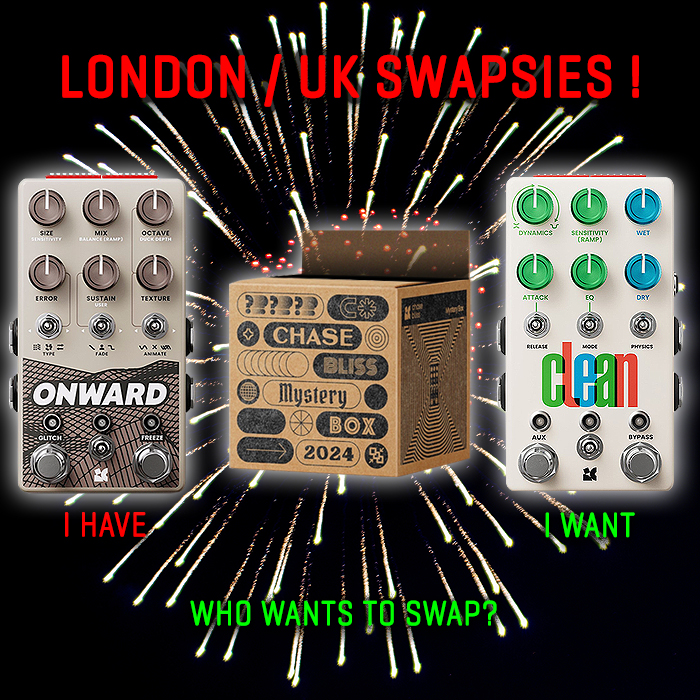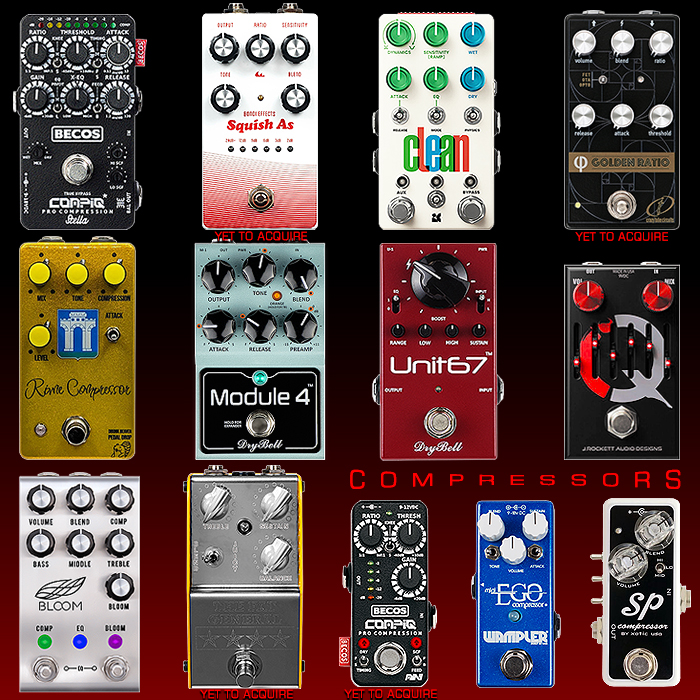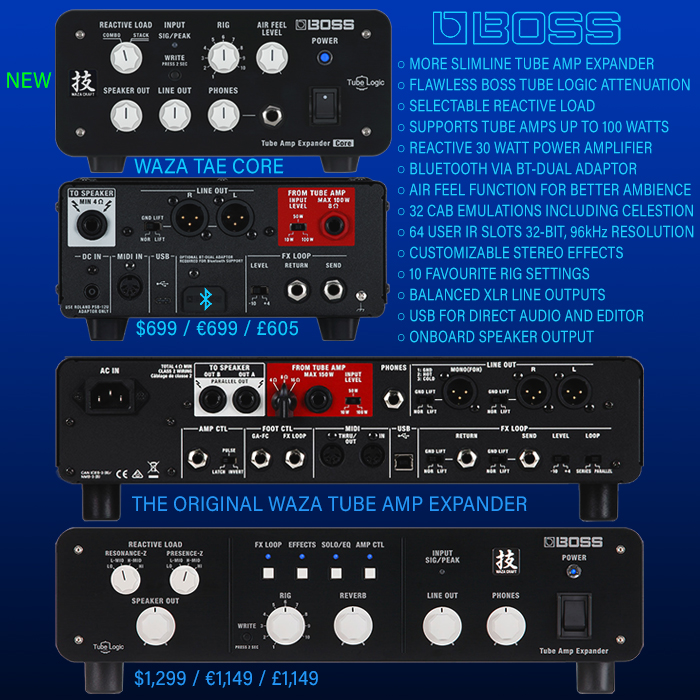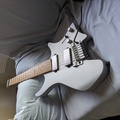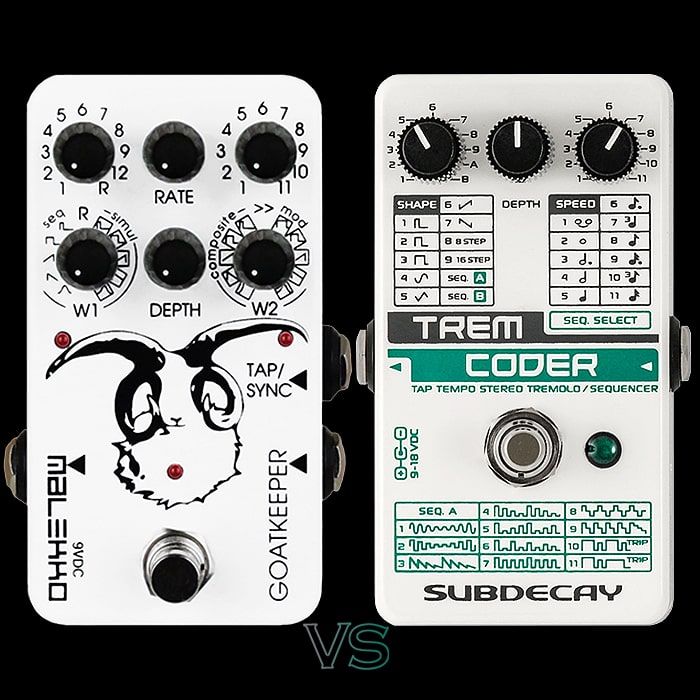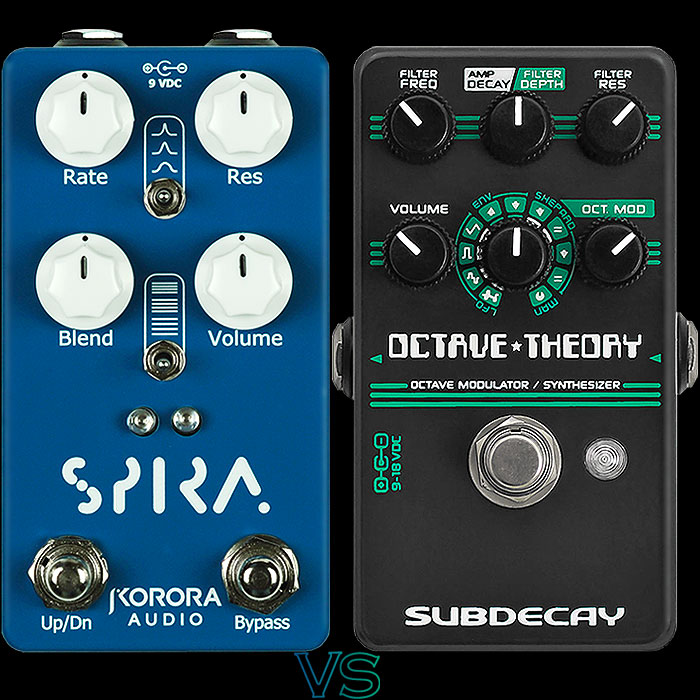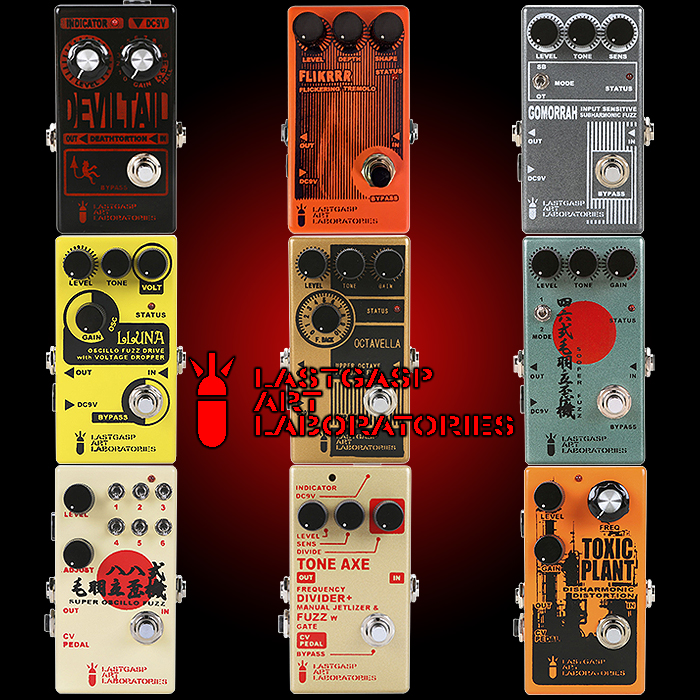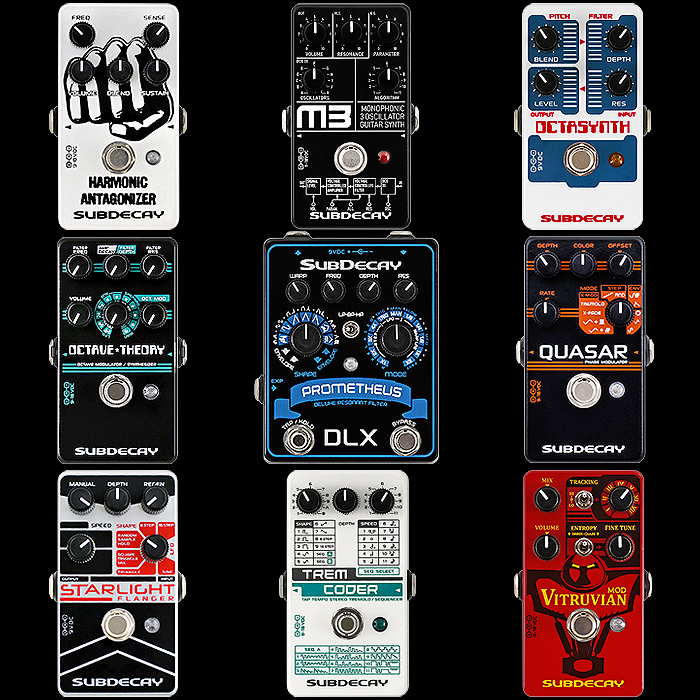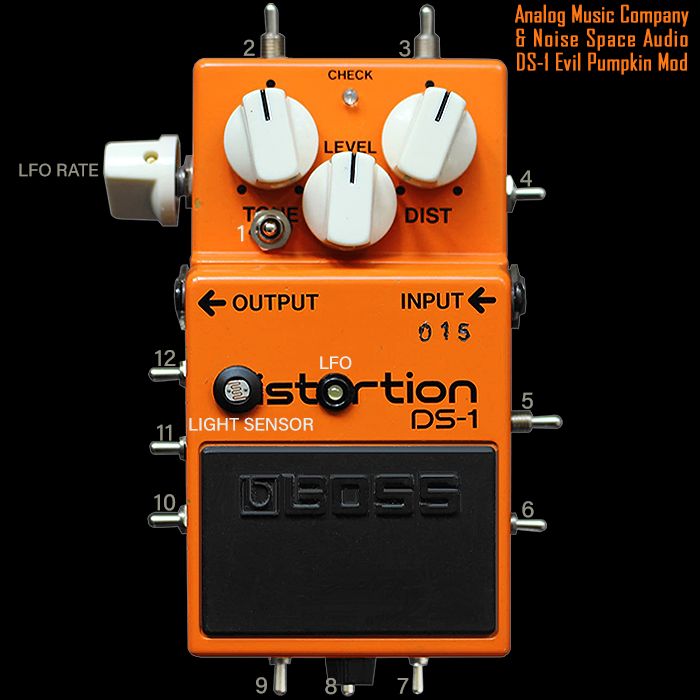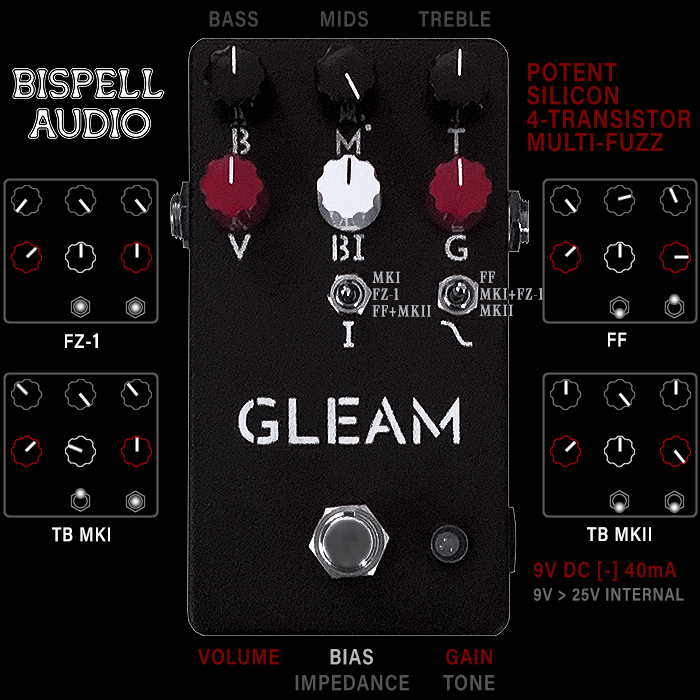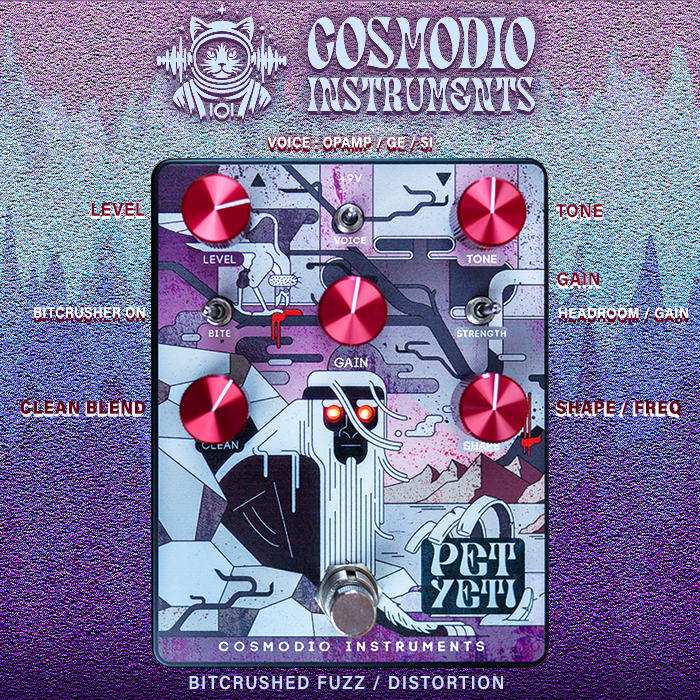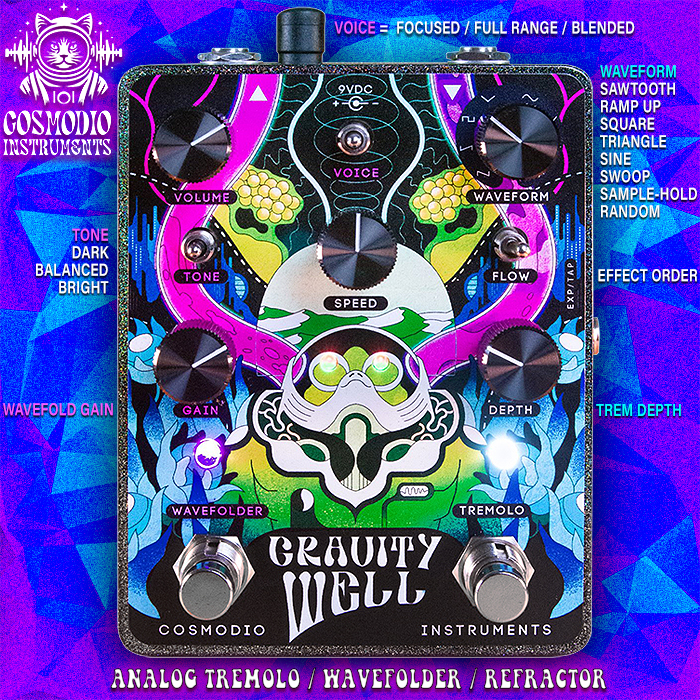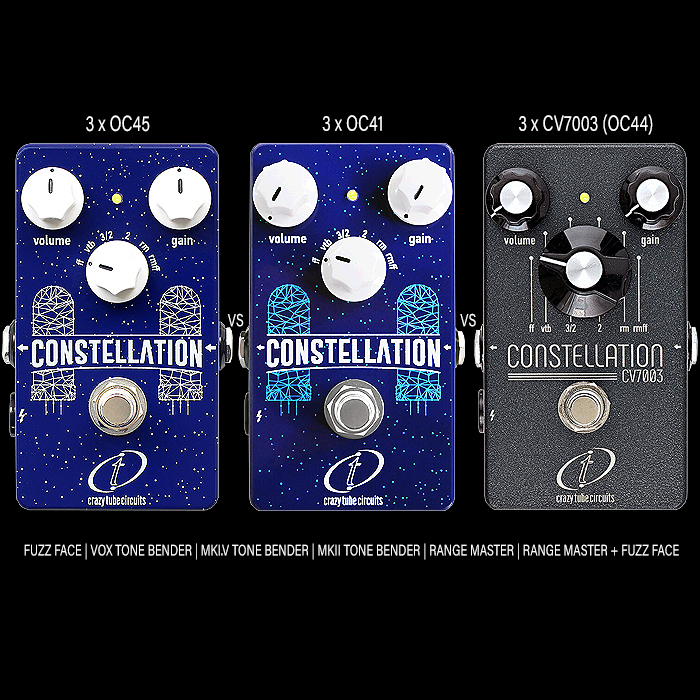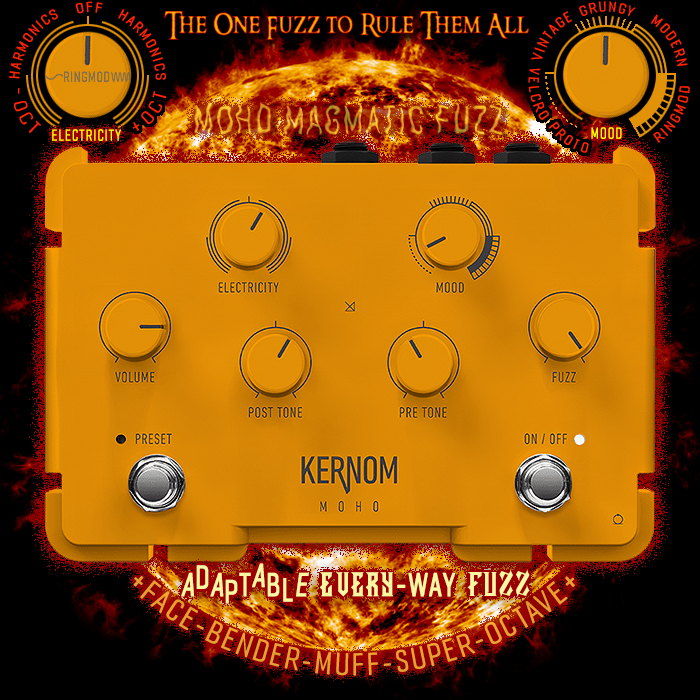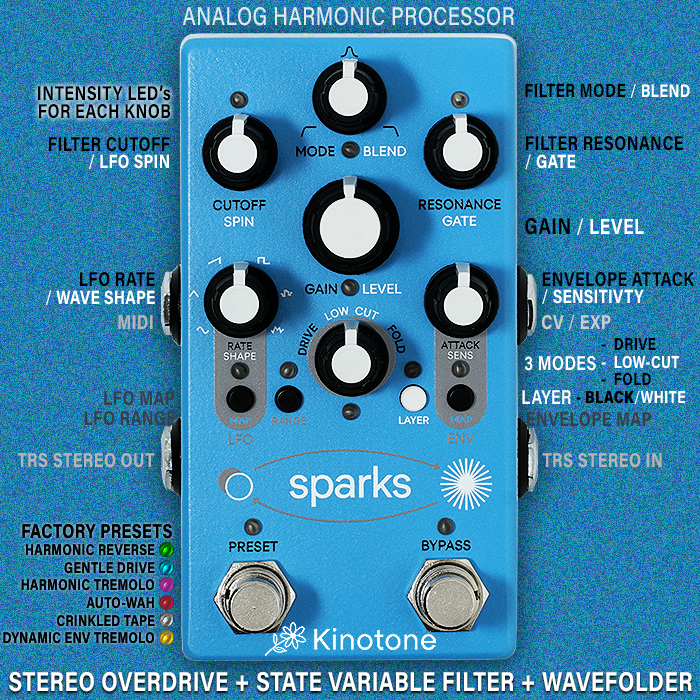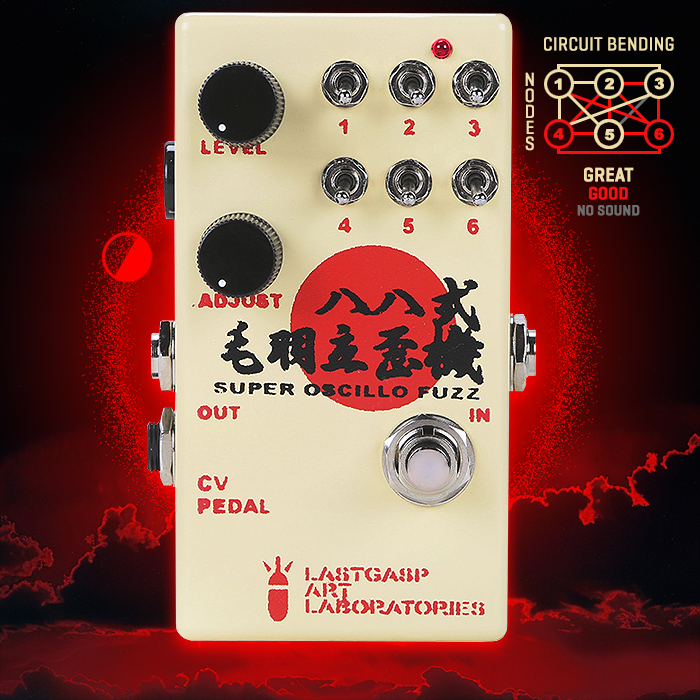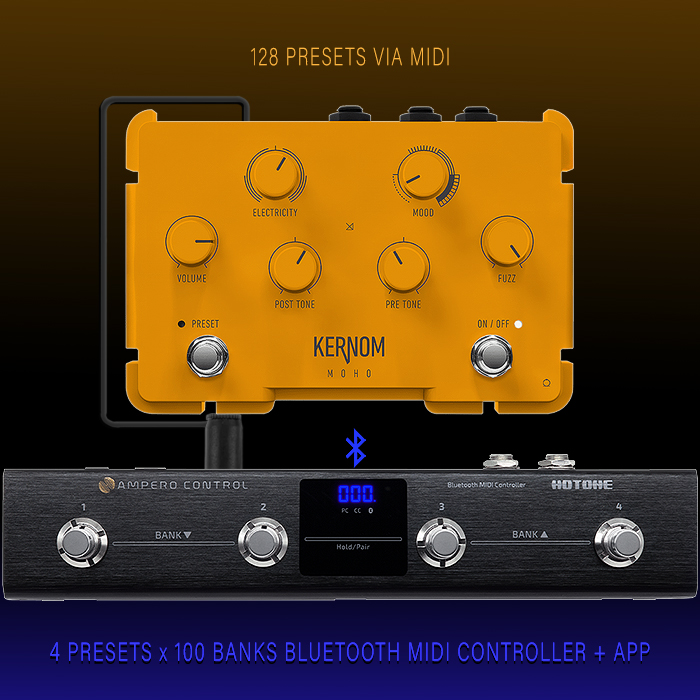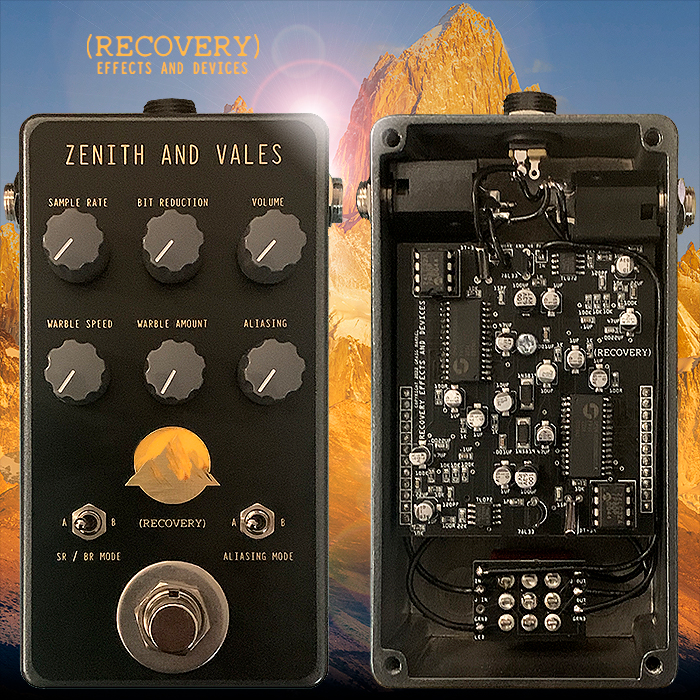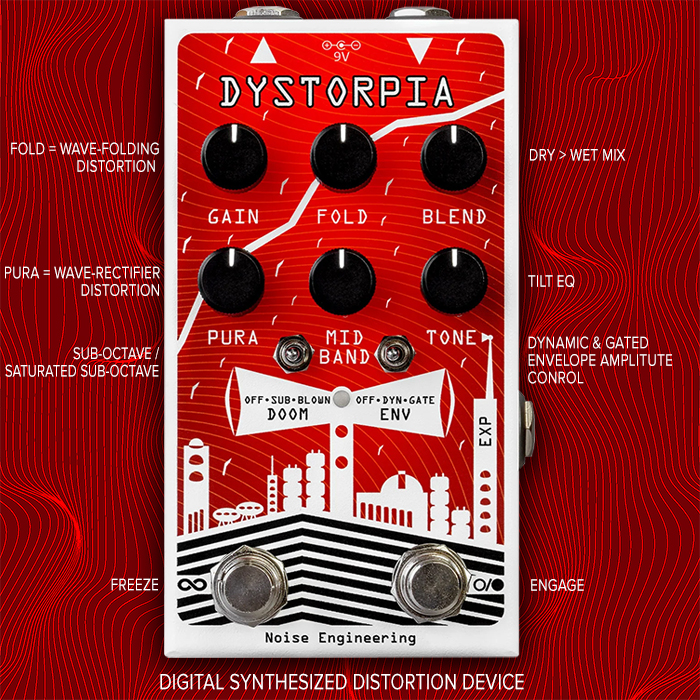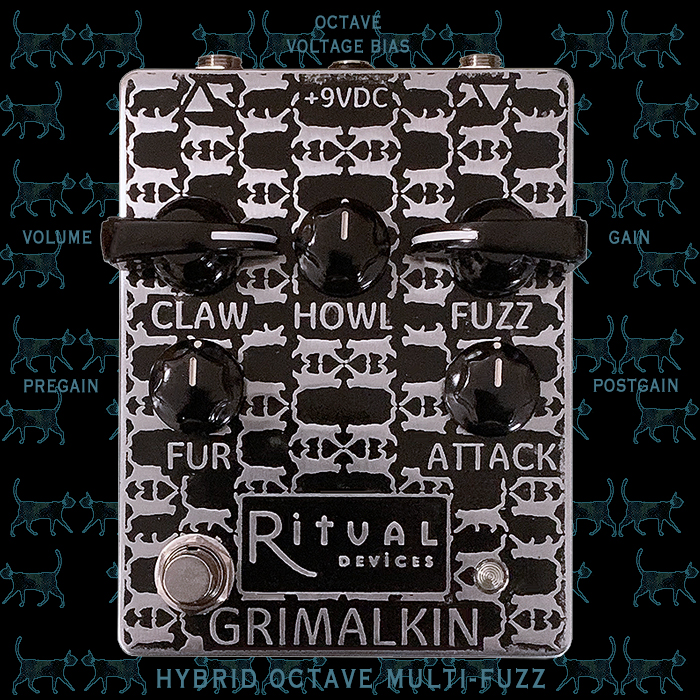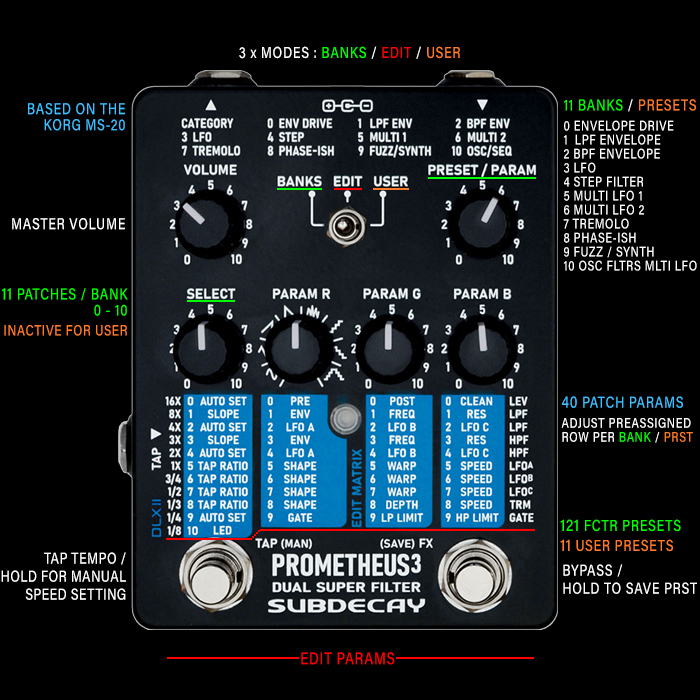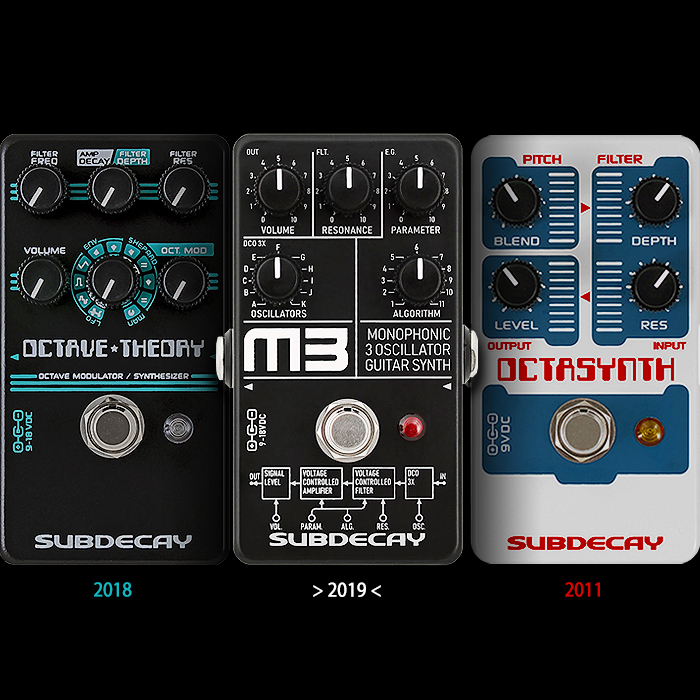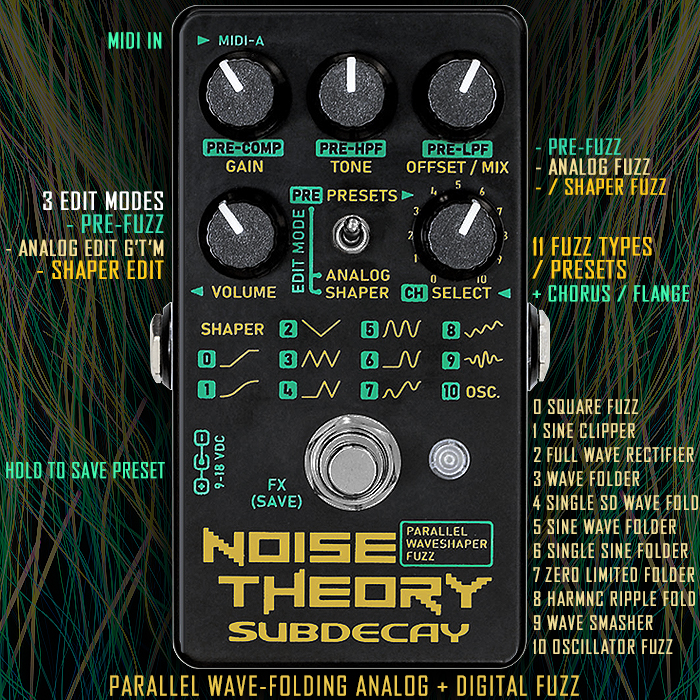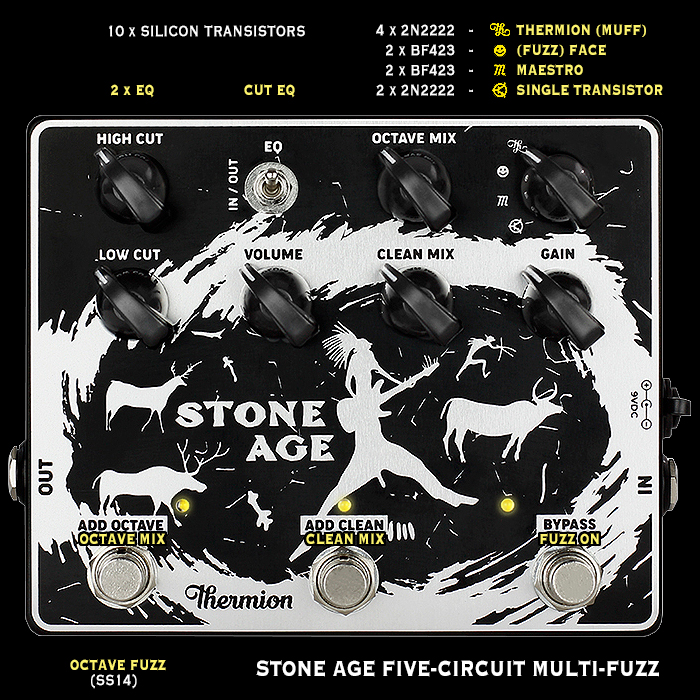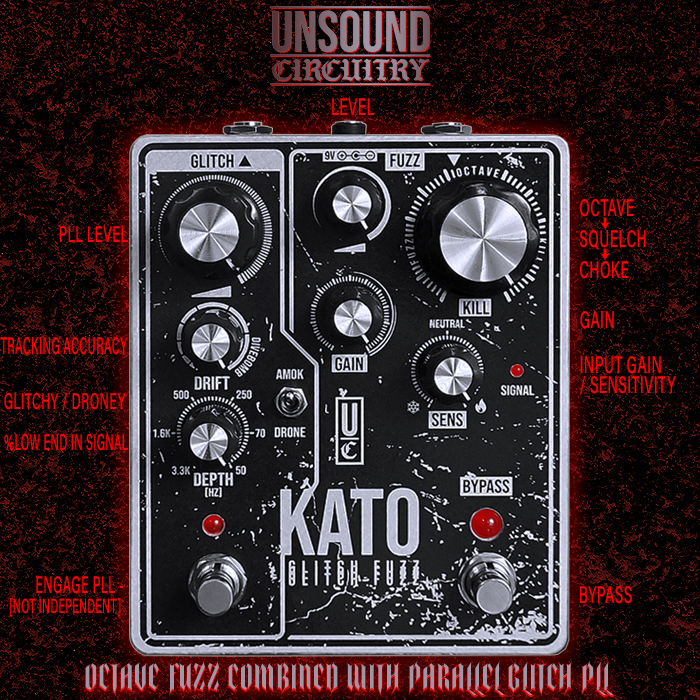The really cool Subdecay Noise Theory Parallel Waveshaper Multi-Fuzz has finally landed!
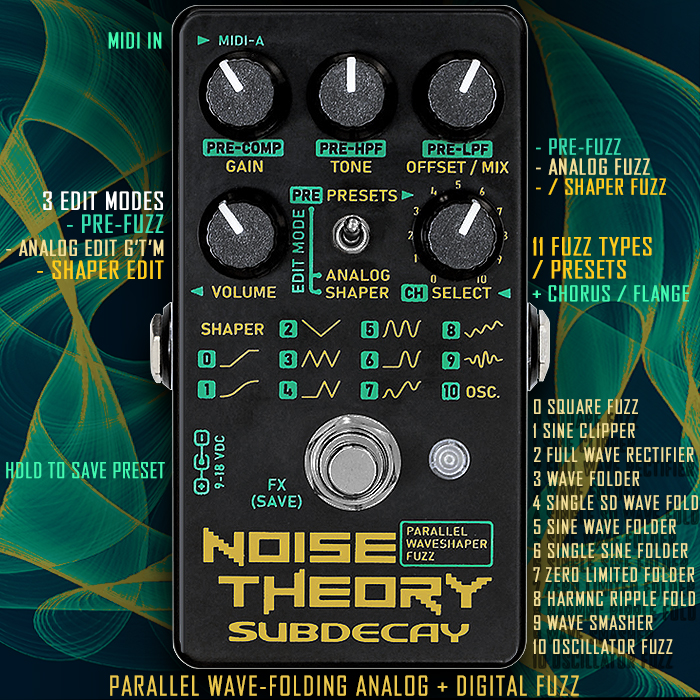
So I actually did a feature on this back in February of last year, while Joe Light / Joe’s Pedals didn’t get new Subdecay stock in until the start of this year. My friend Phil at Pedal Experiments reviewed / demoed this quite some time ago, and my friend Cyril M got his second hand off eBay quite some time ago also - so I’m a little late with this one, but it’s been well worth the wait.
At its core this is a dual-fuzz, where you blend together a Digital Wavefolder Fuzz, with an Analog Fuzz.
Wavefolding is when instead of clipping the tops off the waveform (e.g. Square Wave Clipping), instead you fold those tops of the waves into the main body of the waveform - essentially cutting the top off the wave, flipping it over, and pasting is back into position - which generates a higher level of harmonics / harmonic distortion. Take it to excess and you get a quite harsh sort of extreme white noise texture / timbre, while applied subtly it can beautifully enhance the nature of a Fuzz’s output!
This is actually a really complicated pedal to operate as far as I’m concerned - with all knobs bar the Volume having 2 or 3 different functions - and you actually and confusingly have 4 modes of operation, actually 5 if you include the MIDI-controlled synth - while that’s a whole other kettle of fish.
The main Mode toggle has 3 options, but when you activate Edit by moving the toggle down from its top PRE position - you get additional selections when you move the toggle back up to PRE - while the LED is still flashing - this allows you to deploy different Chorusing and Flange effects on the Fuzz for instance.
You kind of get used to how this pedal operates, while it took a while for me to fully gel with it and be able to operate fully without reference to the manual.
PRE CONTROLS [NON-EDIT] - Compression, HPF <, LPF >, Volume, Select Presets 0-10.
EDIT ANALOG CONTROLS - Gain, Tone, Mix (< Wavefolder Fuzz | Analog Fuzz >), Volume.
EDIT SHAPER CONTROLS - Gain, Tone, Offset (Bias), Volume, Fuzz Type : 0. Square Fuzz / 1. Sine Clipper / 2. Full Wave Rectifier / 3. Wave Folder / 4. Single Sided Wave Folder / 5. Sine Wave Folder / 6. Single Sided Sine Wave Folder / 7. Zero Limited Wave Folder / 8. Harmonic Ripple Wave Folder / 9. Wave Smasher / 10. Oscillator Fuzz.
EDIT PRE CONTROLS - Compression, HPF <. LPF >, Volume, CH [CHORUS/FLANGE] : 0.Off / 1-10 is Different Chorus / Flange Settings - not fully documented! 1 & 5 are higher level oscillation - sort of rotary, 2-4 are Flangers - 4 is Jet Flange - the remainder are mostly different styles of Chorus.
So there are essentially 4 sets of controls at your disposal. You can scroll through the presets and adjust compression, HPF and LPF. You need to be in Shaper or Analog Modes to affect gain, Analog mode also allows you to select the mix between the digital wavefolder fuzz and analog fuzz - where for me that dial sits best in the middle. For the Shaper Mode that 3rd top dial becomes a sort of secondary Bias - where you can introduce a secondary octave of sorts into the output.
You can select which fuzz voicing you want to mess around with via the Shaper Controls, and then apply Modulation with the toggle switch back up in the PRE position, but still in editing mode (still flashing LED).
For the CH Options - 0 is no Modulation, and then you get a mix of Chorus, Flanger, and sort of Rotary / Fluttery LFO Chorus options. The Fluttery sort of Rotary effects are on 1 and 5, I think Flangers are on 2-4 and 9, that’s what is sounds like to me. I particularly like the two adjoining modulations - the sort of Jet Flanger at position 4, and the Classic Rotary / Flutter at position 5.

It's impossible for me to reference favourite settings here - as I felt I needed to tune each Fuzz voicing slightly differently. To be fair I was mostly on Fuzzes 0 and 1, and modulations 4 and 5. And I mostly liked the HPF with the least cut, but the LPF with a little more rolled off. Interestingly those 2 dials operate in different directions - which is also somewhat confusing.
A little patience and perseverance delivers fantastic sounds, where the harshness of some of the voicings probably mean that this pedal will mostly be used stacked with overdrives - which works really well for sure. While I found plenty raw / solo Noise Theory sounds too that I really liked on their own - particularly when combining the onboard Fuzz and Modulation flavours - that helps round out some of the frequencies.
The Fuzz also has a fairly decent guitar volume cleanup - it doesn't reduce it all the way to clean, but still rolls off a fair amount of gain.
This is such a clever pedal really - and of course with hidden depths. Including a MIDI-controlled Synthesizer - which is described as follows :
"All parameters are controllable via MIDI in real time."
"Additionally, transform the Noise Theory into a versatile 4-voice MIDI synthesizer based on phase distortion and wave folding. Simply connect a MIDI controller to the MIDI A input and play any note on the [your] keyboard to activate the synthesizer."
There is a 1/8" TRS MIDI-A Input port set on the left side of the pedal - right next to the Comp/Gain knob.
This is such a capable Fuzz pedal with so much potential and so many different sounds onboard - sounds really decent too - and this is for sure on of my favourite multi-fuzzes. While I do find it somewhat clunky to operate. I'm rarely a fan of multiple secondary and tertiary function on the same controls - which is most definitely the case here!
It's a really clever device - I just wish it could have been a little easier to control and setup. Possibly would have benefitted from being in the larger Sudecay DLX Enclosure size (1590BB) with a few extra controls!
This is truly a wonderful fuzz though if you manage to gel with it, and it's capable of so much - even though most will use this as a stacking pedal. It sounds fantastic either way. Available now from Joe's Pedals in the UK for £195, or $199 direct from the Subdecay Webstore.
Demos







